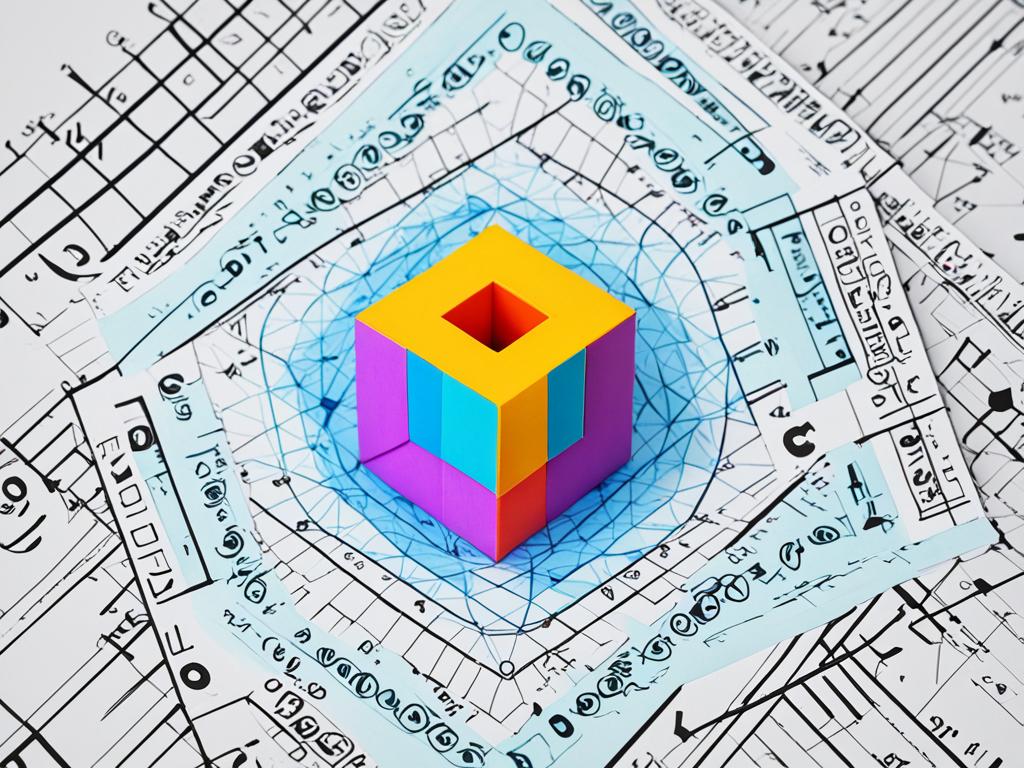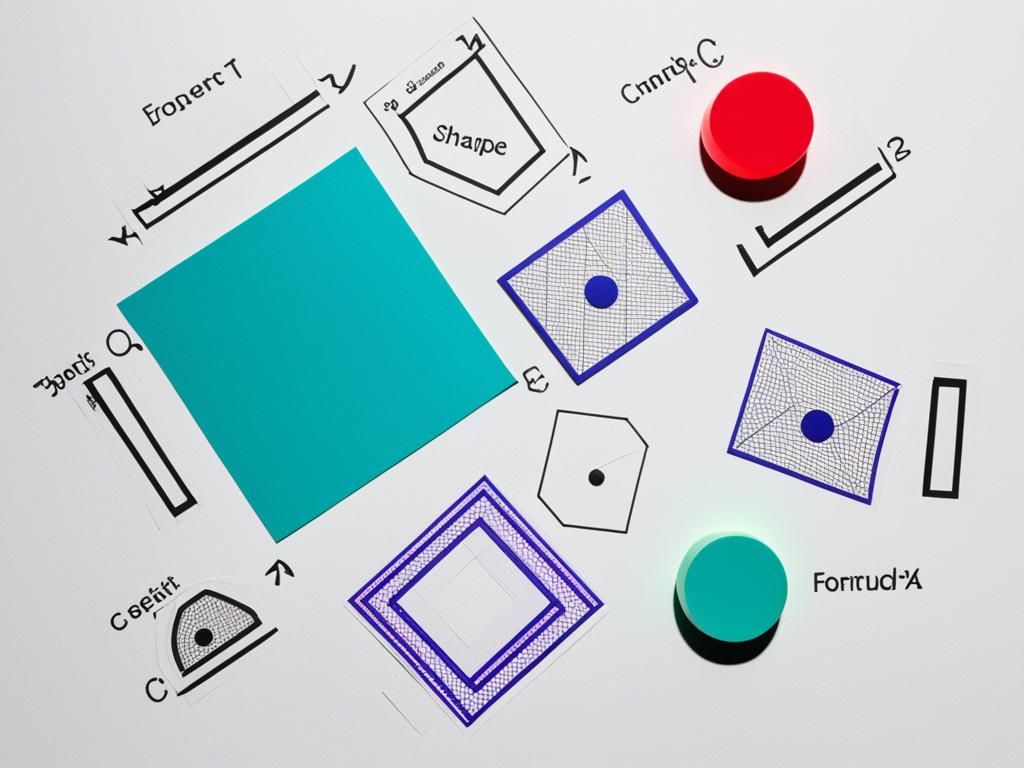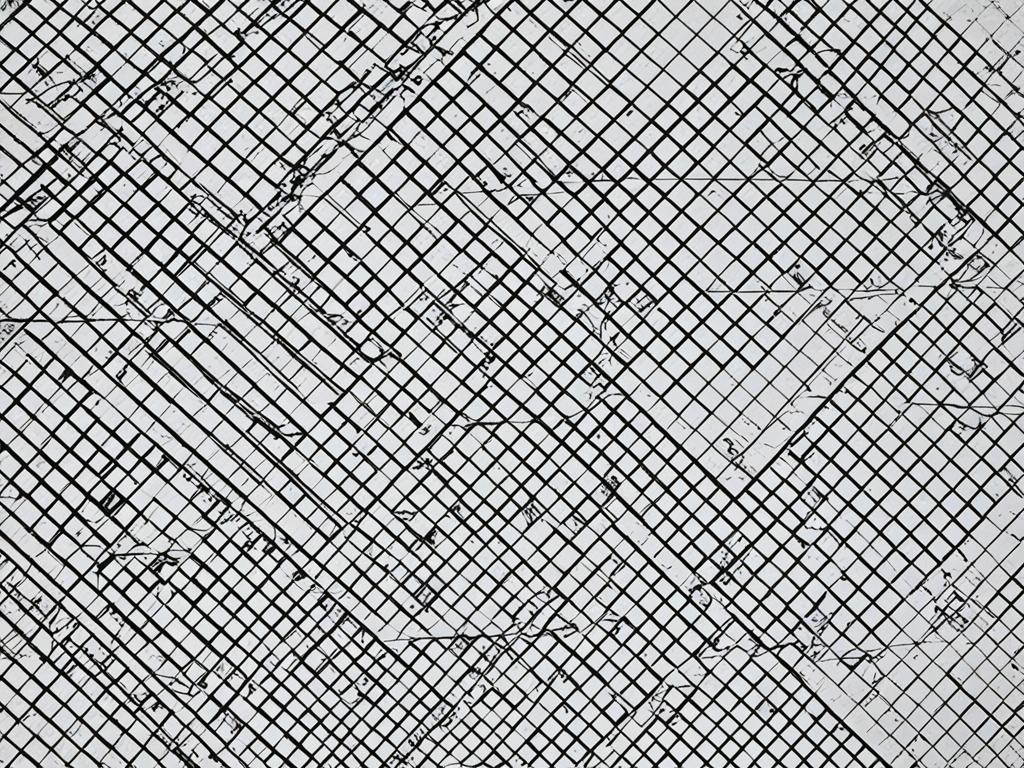
Geometry: Basics, Shapes, Formulas and Examples
Geometry is a key part of math that looks at shapes, lines, angles, and how they connect. This article will cover the basics of geometry. It will talk about the shapes, how to classify them, and the formulas for precise measurements.
Geometry starts with points, lines, and planes. These are the basics that shape our world. By understanding these, we can explore the shapes around us, from simple triangles to complex polygons and circles.

Geometry shows us the special traits of different shapes. We learn about polygons and circles, for example. These insights help us appreciate geometry’s beauty and solve problems with measurements and spatial relationships.
Geometry has many formulas for calculating things like perimeter, area, and volume. These formulas let us solve problems, like finding a room’s area or a container’s volume. By using these formulas, we can apply geometry to real-life situations.
Let’s explore geometry together. We’ll look at the basics, the shapes of our world, and the formulas for measurements. Get ready to see the beauty and power of this important math branch.
Geometry: The Foundation of Shape and Space
Geometry is key to understanding our world. It looks at points, lines, angles, surfaces, and solids and how they connect in space. By diving into geometry, we learn about the shapes and dimensions around us, from tiny particles to huge stars.
Exploring the Fundamentals of Geometry
Geometry is built on three main parts: points, lines, and planes. These elements shape the space we live in and help us find our way around it.
- Points are simple spots in space. They don’t have size but are crucial for creating other shapes.
- Lines connect points and go on forever in both directions. They help us understand direction and movement.
- Planes are flat surfaces that touch space. They are the stage for many shapes and figures.
Knowing how these elements work together helps us see the complex geometry in our world. This includes the symmetry of crystals and the curve of the Earth.
Understanding Points, Lines, and Planes
Points, lines, and planes are the basics of geometry. They mix to form shapes, angles, and other geometric things that describe our physical space.

Getting to know these geometric elements helps us understand our world’s dimensions and coordinates. This knowledge opens doors to more complex geometry and problem-solving.
Angles: The Building Blocks of Geometry
Angles are key to geometry, showing how lines and shapes connect. Knowing about different angles and how to measure them is vital. It helps you understand geometry better.
Angles have various types, based on their measurement in degrees. Here are the main ones:
- Acute angles, which measure less than 90 degrees
- Right angles, which measure exactly 90 degrees
- Obtuse angles, which measure more than 90 degrees but less than 180 degrees
- Straight angles, which measure exactly 180 degrees
- Complementary angles, which add up to 90 degrees
- Supplementary angles, which add up to 180 degrees
Angles are key to understanding shapes and solving problems. By learning about angles, measurement, and degrees, you can get a deeper insight into geometry.

Exploring geometric shapes shows how important angles are. They’re useful in architecture, engineering, and math. Knowing about angles helps you in your geometry journey.
Geometric Shapes: Polygons, Circles, and More
Geometry is all about studying shapes and their features. Our world is full of different geometric shapes. From the triangles in buildings to the circles in nature, these shapes help us understand the world.
Classifying Polygons: From Triangles to Decagons
Polygons are shapes made of straight lines that close in on themselves. They come in many forms. Triangles are simple polygons with three sides. They show how angles and sides are connected.
Rectangles are four-sided polygons with sides that never meet, right angles, and equal sides. Moving up, we find pentagons, hexagons, and decagons. Each has its own special traits and uses.
Exploring the Unique Properties of Circles
Circles are curves that close in on themselves. They have special features. The circumference of a circle relates to its diameter and radius. This makes circles useful in many areas, like building design and engineering.
| Shape | Sides | Angles | Key Properties |
|---|---|---|---|
| Triangle | 3 | 3 | The sum of a triangle’s angles is always 180 degrees. |
| Rectangle | 4 | 4 | All angles are right angles (90 degrees), and opposite sides are equal in length. |
| Circle | 0 (curved) | 0 | The circumference is equal to pi (π) times the diameter, and the radius is half the diameter. |

Learning about geometric shapes helps us understand our world better. It lets us solve problems in areas like architecture and engineering.
Geometry Formulas: Calculating Measurements with Precision
Geometry is a key part of math that looks at shapes, their features, and how big they are. It’s built on important formulas that help us figure out measurements accurately. We’ll look into formulas for perimeter, area, and volume. We’ll see how to use them in real situations.
Formulas for Perimeter, Area, and Volume
The perimeter is the total distance around a shape. To find it, we add up the sides’ lengths. For instance, a square with sides of 5 units has a perimeter of 20 units.
The area tells us how much space a shape takes up. For a rectangle, it’s length times width. For a circle, it’s πr^2, where r is the radius.
Volume measures the space an object takes up in three dimensions. A cube’s volume is side length cubed. A sphere’s volume is (4/3)πr^3, with r as the radius.
Applying Formulas to Real-World Problems
Geometry formulas are not just for theory. They’re useful tools for solving real problems. For instance, you might use the perimeter formula to figure out how much fencing you need for a garden. Or the area formula to see how much carpet you’ll need for a room.
Volume formulas help with calculating storage container capacity or building materials. Knowing and using these formulas lets us make better decisions and solve various problems effectively.

| Formula | Description | Example Application |
|---|---|---|
| Perimeter | The total distance around the boundary of a shape | Calculating the length of fencing needed for a garden |
| Area | The measure of the space occupied by a shape | Determining the amount of carpet required for a room |
| Volume | The measure of the three-dimensional space occupied by an object | Calculating the capacity of a storage container |
Conclusion
We’ve looked into the world of geometry and found its key principles. We learned about points, lines, planes, angles, and shapes. These basics help us understand our world.
We also learned important geometry formulas. These help us figure out perimeters, areas, and volumes. Now, we can solve problems with more accuracy. This is useful for designing things, analyzing data, or just enjoying the beauty of shapes.
As we end our study of geometry, we value its beauty and usefulness more. We now have the skills to deal with geometry in our daily lives. From the buildings we live in to the patterns in nature, geometry is everywhere. It shows how math helps us understand the world.
FAQ
What are the core elements of geometry?
Geometry’s basics include points, lines, and planes. These elements shape our space. Knowing how they relate helps us grasp more complex shapes and structures.
What are the different types of angles, and how are they measured?
Angles are key in geometry. They’re classified as acute, obtuse, right, complementary, or supplementary. They’re measured in degrees, with a full circle being 360 degrees.
How are polygons classified, and what are their unique properties?
Polygons are shapes with straight sides. They’re sorted by the number of sides, like triangles and rectangles. Each type has special traits crucial for geometry.
What are the key geometry formulas, and how can they be applied to real-world problems?
Important geometry formulas help measure shapes and structures. They’re used in many real-life situations. Using these formulas boosts problem-solving skills and deepens understanding of geometry.
How can the study of geometry be beneficial in everyday life?
Geometry is vital in our daily lives, affecting construction, design, art, and navigation. It helps us make better choices, solve problems, and appreciate the world’s structure.



Geometry is very good in our daily lives. it’s helps us in solving problem and inputting it in real life situations.
This post is a great resource for students and teachers alike. Well done!